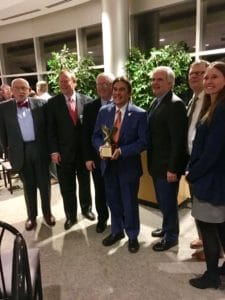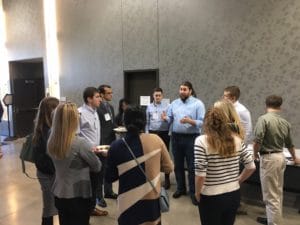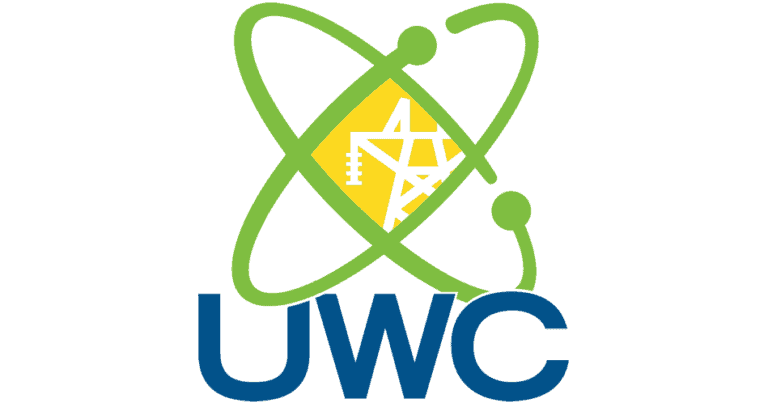Energizing opportunity to meet with atomic entrepreneurs
The fourth annual Advanced Reactors Technical Summit attracted about 210 people representing perhaps a couple of dozen companies, government agencies, regulatory bodies and even a potential customer or two. For those who could not attend, I have a few quick thoughts to share while waiting for links to the presentations given.
The Nuclear Infrastructure Council and Argonne National Laboratory put on a fast-paced event that included useful talks in a well-equipped meeting room with electric plugs at every seat.
Aside: As a writer who employs several devices during all-day meetings, I appreciate that kind of set-up. End Aside.
One of the highlights of the event was an encouraging after dinner talk by Llewellyn King, host of the long running PBS series White House Chronicles.
King began his talk with words that should appeal to the Atomic Insights audience.
I became enchanted with the nuclear business. No so much the nuclear business as the nuclear people. I believe, quite sincerely from the 47 years that I’ve been writing about nuclear power, I believe there there’s something about this technology which brings forth the very best people. Gifted, enthusiastic, idealistic, seeking to improve the human condition.
Announcements of Note
The event included a few newsworthy announcements among a number of encouraging progress reports.
For example, Ed Pheil, the Chief Technology Officer of Elysium Industries, announced for the first time in public that his company was developing a 1000 MWe molten chloride salt fast reactor that would not use any online chemical processing. The fuel salt will periodically be processed to remove fission products, but the actinides will remain in the salt “forever” and become part of the fuel mix for future reactors.
Pheil’s self introduction provided some basis for the audience to understand that this system was designed by credible, experienced nuclear engineers. Before becoming a co-founder at Elysium, Pheil worked for 32 years at the Knolls Atomic Power Laboratory and took part in the design and support of nine different ship classes, not all in the US. He was also involved in the start-up testing about 15 different reactors under the Naval Reactors program and participated in NR’s dabbling in space reactors.
He is part of a team that counts about 300 reactor years of experience. He described his company’s “not aggressive” philosophy about designing their system to use well-proven materials, even though they are picking a rather unique technological path. This previously quiet group bears watching.
Rita Baranwal of the DOE’s Gateway for Accelerated Innovation in Nuclear (GAIN) program, announced the issuance of a funding opportunity for small businesses that provides vouchers for cost shared work at national laboratories. Entities interested in submitting applications for these vouchers are strongly encouraged to file a letter of intent with the program office before March 9, 2017 to enable the office to allocate the resources required to review the applications.
Jose Reyes, the Chief Technology Officer at NuScale and the patient driving force who has refined the NuScale Power Module from an idea in 2000 to a fully developed design that submitted a design certification application last month was chosen as the inaugural recipient of the Nuclear Infrastructure Council Trailblazers award.
His evening acceptance speech was quite short, but during the day he provided an excellent overview of the tortuous path his company has followed and gave a hint of the barriers he expects to overcome in the future before completing the first commercial NuScale Power Plant.
Though the natural course of action for a trailblazing company working through a difficult technology development program might be to leave no trace, erect as high a barrier to entry as possible and hope that potential copycats have just as difficult a time as they did, NuScale seems to be taking a more inclusive view of its role in the effort to develop useful nuclear technology.
The visual analogy that NuScale includes in its briefs describing the new reactor development and licensing process in the U.S. is a winding path up a mountain. The picture includes the leaders leaving trail markers and pitons for future climbers.
I’ve asked the company leaders, only partly in jest, to think about developing a new analogy slide. I have suggested that they follow the example set by coal miners who find a mountain in their way. Instead of leaving trail markers behind for those who follow, maybe NuScale can devise effective ways to remove the mountain.
Young People In The House!
Thanks in part to determined efforts by people like Canon Bryan, Caleb Ward, David Blee and Rachel Slaybaugh, perhaps 20 percent of the attendees at the summit were in their 20s or very early 30s.
When I noticed there were so many young people in the crowd, I did some investigating to find out that most of them had met each other at Dr. Slaybaugh’s Nuclear Innovation Bootcamp at UC Berkeley last summer. She deserves credit for instigating the group and inspiring them to develop their interests.
Bryan met them when he visited the Bootcamp to give a talk about Terrestrial Energy’s design and development plans.
He made the conscious choice of keeping in touch with the students and encouraging their continued interest in advancements in nuclear energy. Many of the innovators are not specifically interested in nuclear engineering work; they understand that there is a lot more diversity in the skills required to build a successful nuclear enterprise than just getting the engineering right.
In cooperation with Bryan, Ward and Blee recognized the importance of making it possible for young innovators to attend and an established appropriate fee structure.
Speaking of diversity, the students had a much greater variety in their backgrounds than many groups of established nuclear professionals. The first three I spoke to were all studying on student visas and were citizens of India, Ecuador, and Lebanon. Another came to the U.S. from Russia, but she didn’t mention here citizenship status and I didn’t think it was my place to ask.
All of them had passed through the background checks that the conference hosts required to attend an event inside the gates of a national laboratory. All indicated that they would love to remain in America to practice their trade, but chuckled nervously when asked what they thought their chances of achieving that goal might be.
I wished them sincere luck and good will. Nuclear energy, perhaps more than most advanced technologies, has always depended on international participation and contributions from immigrants.
Two other young people who made a big splash at the meeting were Eric Meyer and Tay Stevenson, the co-founders of a new pronuclear activist group called Generation Atomic. Eric provided an operatic introduction to a brief presentation on day one of the event. To kick off day two, the two Minnesota natives acted out an interaction that might be had during a door knocking community organization even in their native land.
Don’t ya know that it was hilarious?
One more quick thought about the event before a more complete summary sometime this week. I returned from a break to find a pamphlet left at my spot on the table from an organization calling itself 5 minute nuclear. (5mn.org).
The pamphlet was intriguing, but the authors didn’t rest on a hope that people would pick it up and read it on their own. The organization’s co-founder, Alec Herbert, was at the event. During the next break he was taking the time to introduce himself to as many of the attendees as possible.
He is a clean-cut, direct young man who confidently established eye contact and described his plans to complete his technical education while developing his true interest in policy. It turns out that both Alex and at least one of his colleagues in the new group are experienced Army Rangers with a couple of deployments under their belts.
Something tells me that their advocacy strategies and tactics are different, but probably complimentary to those being used by the Generation Atomic organizers.




Minor correction. The name of the man behind 5-Minute Nuclear is Alec Herbert.
Thanks for the mention. It is the students that deserve the thanks and the laurels for having the courage to attend and interface with a group of stodgy, old-school overlords of the industry.
We do intend to make this a regular thing. The youth of the industry must engage the older outgoing generation and endeavour to create a congenial and productive hand-off.
@Canon
You’re welcome. I’ve corrected Alec’s name. The one I had came from the 5-minute nuclear site’s “About” page.
Rod makes these events come to live for people who couldn’t attend. Makes me wish I could be there and learn more from all these excellent (young) people!
Rod, thank you for this post. I had the pleasure of meeting Ed Pheil at a local ANS section meeting, and I was impressed with Elysium’s plans.
I don’t know how often it is mentioned about MSRs of various types, but the aluminum industry has been using molten salts for decades. Molten salts are an integral part of refining aluminum. https://en.wikipedia.org/wiki/Aluminium_smelting
I write this because it is perhaps too easy to think of anything that uses molten salts as using a “new exotic technology.” Like all technologies, MSRs will build on existing technical knowledge.
Hmmm, that makes me wonder if perhaps there is any areas for MSR collaboration between ORNL and Alcoa, with the town/city of Alcoa being a mere 30-ish miles down I-140/Pellissippi Parkway from Oak Ridge.
The aluminum industry uses a lot of electricity. The Pacific Northwest used to have several aluminum manufacturers placed there since they had the use of cheap abundant hydroelectric power. Perhaps history could repeat itself with an aluminum industry obtaining power from the newer style nuclear reactors.
Thanks for the article.